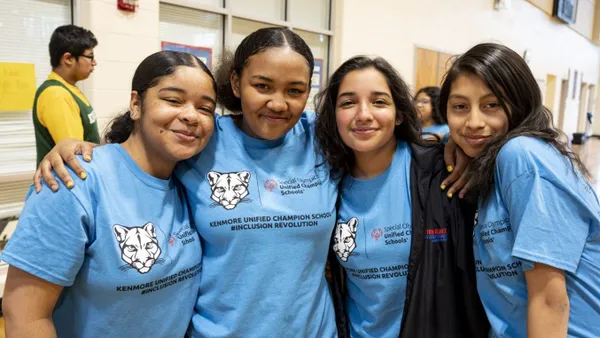This latest Pre-to-3 column focuses on a new documentary about early learning and related policy issues. Past installments of Pre-to-3 can be found here.
In connection with early-childhood advocacy campaigns linked to governor’s races, the producers of a new documentary film about young children’s learning and development will hold screening events in California and Ohio over the next several weeks. Viewings in New Mexico and Vermont are also scheduled.
“No Small Matter” calls early-childhood a “a grown-up issue,” and recounts what researchers have learned about early brain development and the value of parent-child interaction from birth onward.
“People have a tendency to think there’s nothing going on up there,” Patricial Kuhl, co-director of the Institute for Learning and Brain Sciences at the University of Washington, says in the film. “What’s going on up there is rocket science.”
But the film also features the lives of children and families to show the increasing struggles some parents face in finding time to spend with their kids during their younger years.
“The good news is we know what kids need to thrive,” says the narrator. “The bad news: we’re making it harder and harder for parents to give it to them.”
The project began when co-director Greg Jacobs, of Siskel/Jacobs Productions in Chicago, was working on a video for the Ounce of Prevention Fund and spent a week at Educare Chicago, a model early-childhood program for children from birth to age 5 that has inspired more sites across the country. The author of a book on school desegregation in Columbus Public Schools in Ohio, Jacobs was interested in education policy, but was unfamiliar with issues related to young children.
“[Early-childhood education] had never entered the picture,” he said in an interview. “We became zealous converts in the span of a week.” Joining with Kindling Group, also a Chicago-based documentary film company, the project attracted funding from a wide range of foundations that have focused on early-childhood issues in recent years, including the Bill and Melinda Gates Foundation and Bezos Family Foundation in Washington, the W.K. Kellogg Foundation in Michigan and the David and Lucille Packard Foundation in California.
The film, which runs a little over an hour, includes parents working multiple jobs to afford child care — and feeling bad that they have to leave their children — and a mother who benefits from a parent education program in Waco, Texas. It also covers challenges facing early-childhood educators, including a preschool teacher in the “yellow room” at a center in Highland Park, Illinois, who works a second job as a bartender and decides to return to school to finish a master’s degree.
“I was blown away by the results of the film — the way they wove together the storyline with the background, with the data and the emotion of what people are feeling,” Rhian Evans Allvin, CEO of the National Association for the Education of Young Children (NAEYC), said in an interview. She also appears in the film.
Other topics addressed include the opportunity gap, with a reference to the influential 1992 study that found a 30 million word gap between toddlers in low-income, “welfare” families and those in high-income, “professional” families. While the study has come under increasing scrutiny, Jacobs said there was no reason not to use it in the film.
The controversy, he said, “doesn’t invalidate the concern that the time and ability for parents to spend good quality time interacting with their children is still a problem.”
Also featured is Shay Gaddis, now the director of a YMCA in Brooklyn, New York, and one of the participants in the Abecedarian Project, an experimental early-childhood program in North Carolina in the 1970s used to test the long-term benefits of a comprehensive early-childhood education program.
For now, advocacy organizations such as Choose Children in California and Groundwork Ohio are using the film in a “soft opening” as part of efforts to draw gubernatorial candidates’ attention to children’s issues. But “after the smoke clears from November and we know where the world is heading,” Jacobs said the team will look at bringing it to different audiences.
One of the first showings was at NAEYC’s summer Professional Learning Institute in June. “We had a packed room. We had to bring in extra chairs,” Allvin said, but added that she believes it will also attract attention from those who aren’t already invested in the issue. “A film puts it in a whole other realm.”







 Dive Awards
Dive Awards








